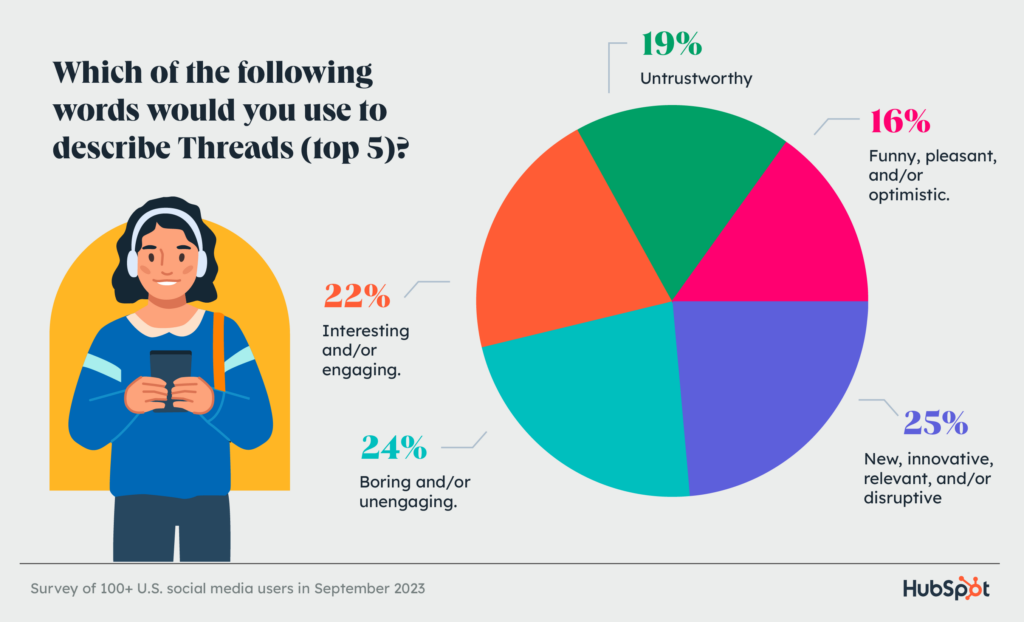
Threads vs Twitter: How Brands Can Dominate the New Social Media Landscape
Imagine you’re sitting in your favorite café, sipping your morning coffee, scrolling through the latest updates, Suddenly, a friend leans over and asks, “So, have you tried Threads yet?” A year ago, this might have sounded like a joke which never fails you to laugh, but today, it’s a serious question that reflects the changing dynamics of the social media world. Threads vs Twitter (now rebranded as X) has become a popular discussion, with both platforms offering unique opportunities for users and brands
Meta’s Threads has entered the social media ring as a sleek, minimalist rival to Twitter (now rebranded as X), igniting what’s shaping up to be a battle for digital dominance. With the controversy surrounding Elon Musk’s Twitter overhaul—from charging for blue checkmarks to changing algorithms—which have caused both users and companies to reevaluate their commitment, Threads’ launch seems appropriate.
With a new viewpoint and the promise of a more efficient and interesting social experience, Threads shows up as a welcome substitute. So, how can your brand navigate this new landscape and make the most of these evolving platforms? Let’s dive deeper into the Threads vs. Twitter debate to uncover the opportunities for building stronger, more dynamic digital connections.
Let’s dive and talk about the tale of two platforms: Threads vs Twitter
Twitter let’s call it a veteran platform that’s been shaping digital conversations since 2006. Known for its quick, bite-sized updates, it became the go-to space for breaking news, cultural commentary, and real-time chatter. Over time, it expanded with features like Spaces (audio chats) and Subscriptions (paid content).
In the other corner is Threads, Meta’s fresh and minimalist challenger that launched in mid-2023. Built as a Twitter alternative, Threads integrates seamlessly with Instagram, focusing on simplicity and meaningful connections. While it’s still adding features like trending topics and hashtags, Threads has already gained traction with brands, influencers, and users seeking a more positive, curated experience.
Despite X success, recent leadership changes have unsettled its user base, contributing to a 5.6% decrease in U.S. users since Musk’s takeover. These two platforms define a new era of social media, offering distinct opportunities for brands to engage with their audiences in different ways. The challenge for marketers lies not in choosing sides, but in understanding how to leverage the strengths of each.
Threads vs Twitter, what sets them apart?
When Threads first launched, it sparked significant interest among users looking for an alternative to Twitter. However, recent data highlights evolving user intentions. According to a HubSpot survey conducted in September 2023, 31% of U.S. social media users plan to use Threads as much as they do today, showing steady engagement potential. Meanwhile, 15% of respondents plan to start using Threads actively, indicating untapped opportunities for growth among newer users.
Interestingly, 17% of users expressed they will likely stop using Threads entirely, signaling a critical challenge for the platform in retaining long-term engagement. For brands, this mixed response serves as a reminder: while Threads offers significant promise, its success depends on sustained audience interest and strategic enhancements to its features.

Threads and Twitter may share similarities as text-based platforms, but their differences define their unique value propositions for brands. Let’s take a look-
Audience and engagement: X as a well-established global audience, particularly among professionals, journalists, and thought leaders. It’s the platform where breaking news happens first and where brands can participate in fast-paced trends.
Threads, on the other hand, appeal to a younger, Instagram-centric crowd. Its early adopters lean towards casual, conversational interactions, making it less intimidating for users who find Twitter overwhelming. For brands, this means Threads offers a chance to connect with a more relaxed, engaged audience.
Algorithms and content discovery: Twitter relies heavily on trending hashtags and personalized feeds. It’s great for visibility but can feel chaotic for users. Threads simplify this with a chronological feed that prioritizes organic conversations over trending noise. For brands, this could mean higher-quality engagement on Threads versus the pressure of “viral or bust” on Twitter.
Ad options and monetization: Twitter is a seasoned pro at offering ad tools, from Promoted Tweets to advanced targeting. Brands can tap into paid campaigns with precision, although costs can add up quickly.
Threads doesn’t yet have an ad system, making it a purely organic platform for now. While this limits direct ROI tracking, it also offers brands a golden opportunity to build authentic connections without the noise of paid promotions.
Why brands should embrace both Threads vs Twitter
In the dynamic world of social media, Threads and Twitter serve distinct yet complementary purposes. Twitter is the go-to for real-time updates, live events, and trending conversations, offering brands a fast-paced platform to capture immediate attention. In contrast, Threads feels like a relaxed gathering, where deeper, more meaningful connections can flourish. A winning brand strategy lies in leveraging both: using Twitter for its immediacy and quick-fire trends while tapping into Threads for storytelling and community building.
For instance, brands can maximize Twitter’s potential by staying relevant with trending hashtags, sharing engaging visuals, and using witty one-liners to spark conversations—Wendy’s being a masterclass example. On Threads, the focus shifts to casual, authentic interactions by initiating conversations, cross-promoting Instagram content, and experimenting without the pressure of ads. Brands like Netflix have successfully adopted Threads’ friendly vibe to connect with audiences on a personal level.
However, neither platform is without challenges. Twitter’s algorithm can bury content if it doesn’t hit the right notes, and ongoing controversies have impacted user trust. Threads, being the newer platform, lacks trending features and hashtags, and its audience overlap with Instagram can make it feel redundant for some.
Ultimately, pitting Threads against X misses the bigger picture. Both platforms offer unique opportunities for brands to connect with their audiences in different ways. Think of Twitter as your outgoing, trend-savvy friend and Threads as the introspective companion who fosters thoughtful conversations. By understanding and leveraging their strengths, brands can create a balanced and effective social media presence.
Choosing one over the other could cause brands and advertisers to miss out on the diverse opportunities each platform offers. Both can play pivotal roles in a well-rounded marketing strategy.
Cut to the chase
The Threads vs Twitter debate is just the beginning of an evolving social media landscape. As platforms grow, adapt, and compete, brands need to remain agile and innovative. The key isn’t to choose one platform over another—it’s to understand how each fit into your overall marketing strategy. So, grab your coffee, open your favorite app, and start connecting. Whether it’s Threads, Twitter, or both, the social media playground is yours to explore.


